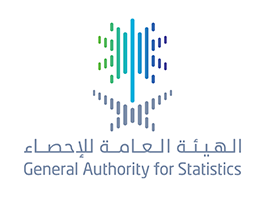Last update 9 / 10 / 2017
The main specialized concepts and definitions used in Population Characteristics Survey

1)Geographic distribution data:
- The geographic distribution data provide indicators for the local services planning and for its distribution on local units.
- They provide data about the discrepancy in all demographic and social indicators between the different regions of Saudi Arabia according to the survey findings.
- Providing data about the categorization and tabulation of all demographic and social characteristics of the individuals included in the sample in the form of statistical schedules categorized and tabulated according to the administrative division of the Kingdom and all different regions in Saudi Arabia.
2)Household size and composition:
- The study of the household size provides an indicator of the change in such size.
- The study of the relationship to the household head aid in recognizing and analyzing the household structure.
3)Age-distribution data:
- The study of the population distribution into age groups of the individuals who are at school-age individuals.
- The tabulation of the five-tabs age classification of the population census is adopted to analyze population changes and evaluate the future population censuses in addition to the calculation of the vital amended details, for example, the fertility rate according to age.
- Providing the age-distribution data help study dependency issues, patterns and trends of consumption and the labor power.
4) Nationality data:
- Identifying the population structure according to nationality and the rates, and providing data in the field of educational and health services.
- Measuring the labor work according to the nationality.
5)Educational status data:
- Providing data about the illiterates, their places and ages, which will help in studying this phenomenon and setting proper programs for tackling it;
- Making comparative analysis of illiteracy data stemmed from this and previous censuses to measure effectiveness and progress achieved by the state in literacy programs.
- Knowing the numbers of different scientific degree holders in a way that helps in harmonizing between education outputs and labor market requirements
6)Occupation status data:
- Identifying the manpower professional structure and consistency with the actual needs of the necessary state's development programs.
- The professional structure provides a guide according to the education status of the unemployed people to establish projects and enterprises that can provide place for their power of production.
7)Marital status:
- The tabulation of marital status data by gender and age draws an image about the demand and reluctance for marriage in addition to the phenomenal study of widowhood and divorce.
- The tabulation of marital status data by gender, age and education status mirrors the effects on the prevalent patterns of marriage in the community.
- The population distribution by marital status is important to study its effect on fertility rates and consequently the population growth.
- The marital status data of the population are recorded in the important social and economic surveys.
- The percentage distribution of the females according to their age upon marriage is beneficial in identifying the spinsterhood age, and the rate of the spinsterhood in Saudi society.
8)Mortality over the past twelve months to the survey:
- Calculate detailed mortality rates by age and sex; and
Statistical Survey:










